#Gurkha Regiments
Explore tagged Tumblr posts
Text
There are about 35,000 Nepali Gurkhas currently serving in the Indian army, including in the geopolitically sensitive region of Indian-administered Kashmir and the northeastern parts of the country. The Gurkhas have a strong bond with the Indian military, and Gurkha regiments have become part of the culture of the Nepali hill communities. There are about 120,000 Indian Gurkha veterans living in Nepal. Their pension and other benefits have contributed to the economy of the impoverished hill regions.
Anbarasan Ethirajan, ‘Agnipath scheme: The pain of Nepal's Gurkhas over Indian army's new hiring plan’, BBC
#BBC#Anbarasan Ethirajan#Nepali Gurkhas#Indian army#Indian-administered Kashmir#Gurkhas#Gurkha regiments#Nepali hill communities#Indian Gurkha veterans#Nepal
5 notes
·
View notes
Text
Others: If you were asked to write for the 5th Valkyria Chrinicles game, how would you write it?
Me: As a mixture of the Burma, New Guinea, and Borneo campaign.
Others: … What?
Me: Well, the Valkyria chronicles franchise has always liked toying with some degree of moral ambiguity, with an empire that is clearly in the wrong, but the side you are fighting for, while better, still has glaring flaws. Furthermore, the fourth game implied and talked about the idea that nations within the Federation has colonies, and while I am skeptical of how much of what the Imperial soldier stating that claim is stating established facts or state propaganda, that could be an angle to explore plot wise.
Think about it, perhaps the Empire launches a naval invasion to try and take over these resource rich colonies, and are banking on creating a narrative that they are liberators to the indigenous population, just like how the Japanese did during their initial pushes into Southeast Asia.
This could also mean a new perspective of what I shall dub for the sake of this post, the “Commonwealth”, who draws inspiration from mainly British colonial forces and Commonwealth, more specifically, Indian and Australian forces, with a heavy side of Gurkhas. Where you have to manage and combat this narrative, between members of your squad that are descendants of Edinburgh Federation settlers (Australians), indigenous peoples (Indians, Indonesians, Malaysians, and Nepali Gurkhas) and those actually from the Federation (British).
Not to mention, this could also be interesting to explore in the context of why they are siding with the Federation. Those actually from the Federation might view the conflict through the lens of ideology, and preserving the Empire Federation. Meanwhile the settlers might not care about the broader Federation, but they do care about their home being threatened. Finally those who are indigenous might have negative feelings about their current Colonial overlords, but be even more skeptical to the Imperial claims, or maybe even be exposed to the actual Imperial treatment that is far worse than anything the Federation have done.
And the Darscen can be explored in an interesting lens, as the Federation-native members might have the most amount of anti-Darscen soldiers, while settlers might still talk about them using offensive terms, but otherwise treats them better due to the need for the skill sets often associated with Darscens being particularly useful and valuable, while the indigenous members don’t have the context for the hate, and as far as they’re concerned, it’s someone else’s problem.
Gameplay-wise, the door is open to a lot of creativity. Jungle warfare can open the door to a lot of new mechanics and tactical situations. Maps could be very claustrophobic due to the thick jungle. Closer engagements could lead to having classes be more flexible, such as the inclusion of melee, bonus equipment like flares for the Scout class that helps to boost accuracy within the zone, or even new skills like engineers being able to build emplaced weapons.
Then there are the tanks. Tanks could play an interesting role, as tanks were used in far more limited numbers and roles compared to the European fronts, but I can easily see an interesting exploration in this world about smaller more compact tanks that function like anti-infantry roles, like how the Australians use Matilda tanks in the liberation of Borneo.
I could also see the dropping of the lancer class (iconic as it is), but the adoption of a new class that I would dub the “point man”, who would act as a mix of the scout and the shock class, having high movement range, but armed with more short ranged weapons like submachine guns and introducing shotguns to the series.
And the enemy can be interesting as well, with perhaps less use of the traditional image of the Imperial forces within the series, but instead more like naval troops and sailors and marines, perhaps their own colonial forces, and maybe even native people who side with the Imperials, deeming the Federation too irredeemable.
Finally, aesthetic. I think people are too obsessed with either the German, Soviet and/or American WWII aesthetic, but I personally find British commonwealth and colonial forces too be an awesome aesthetic, and also because I believe people often overlook the actions and achievements of British imperial forces.
Personally, I think people might be intrigued with playing characters inspired and based off Sikh, Malay, Gurkhas, Australians, and even British forces. Slouches hats, Bren guns, Owen guns, and Kukri knives, honestly it would be cool to see and use.
Besides, what could be cooler than siccing a fantasy world equivalent of a Gurkha or Aussie on an unsuspecting Imperial?
Others:… Go back to having the shower thoughts be about Genshin.


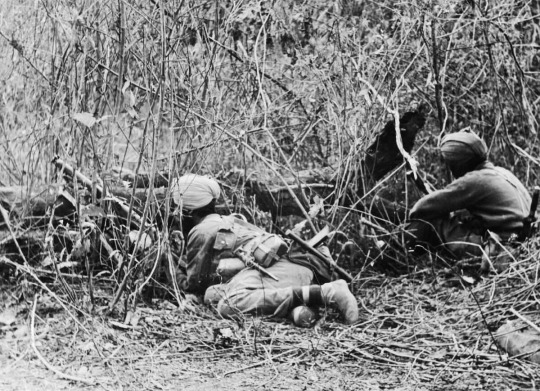
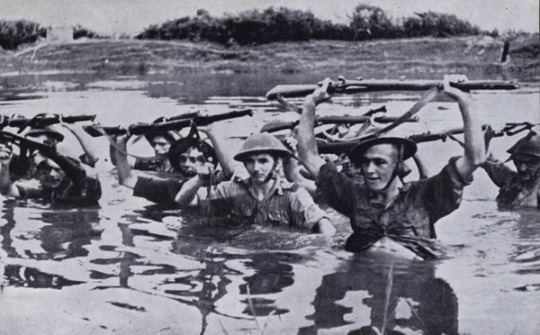
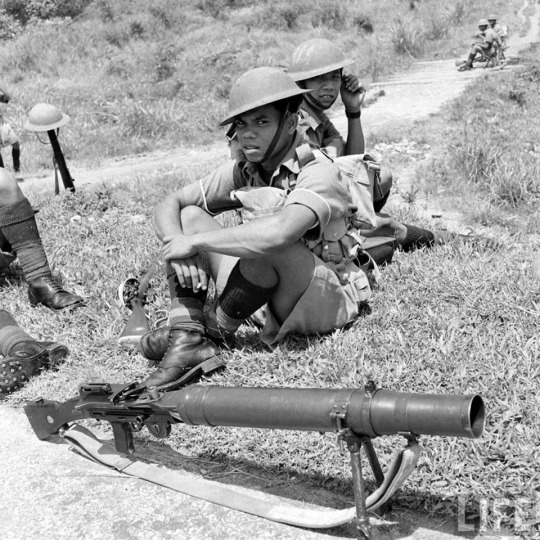

Images from top left, clockwise: Australians during the Borneo campaign; Gurkha, unknown location; British soldiers crossing a river during the Burma campaign; Australian Matilda Tanks during the Borneo Campaign; Soldier of the Malay Regiment; Indian Sikh soldiers, Burma campaign
#history#world building#valkyria chronicles#world war second#world war ii#wwii#wwii era#british empire#Australia#India#burma#Burma campaign#Borneo campaign#borneo#Gurkha#2 AIF#Matilda tanks#british army#indian army#australian imperial force#malaysia#Malay regiment#long post#long reads#shower thinking#shower thoughts#world war 2 aesthetic#history aesthetic#aesthetic
9 notes
·
View notes
Text

The Queen's Own Gurkha Logistic Regiment, also known as 10 The Queen's Own Gurkha Logistic Regiment or 10 QOGLR, is a regiment of the British Army's Royal Logistic Corps.
#The Queen's Own Gurkha Logistic Regiment#10 The Queen's Own Gurkha Logistic Regiment#10 QOGLR#British Army#Royal Logistic Corps#gurkha#military#buckingham palace#british royal family
1 note
·
View note
Text

Soldiers of the Parachute Regiment prepare to enter Pristina, 1999
In June 1999, British soldiers deployed as a peacekeeping force to Kosovo in the western Balkans.
British troops, along with other NATO forces, first entered Kosovo on 12 June 1999 under the command of Lieutenant General Sir Mike Jackson. The Parachute Regiment and The Royal Gurkha Rifles were among the first to secure the Kaçanik Gorge.
A multi-national force structure was established in Kosovo with the mission to create and maintain a secure environment and promote peace and stability in the country.
13 notes
·
View notes
Text
Is there a canon Imperial Guard regiment based on the Gurkhas?
If not, I need to make one and draw it immediately

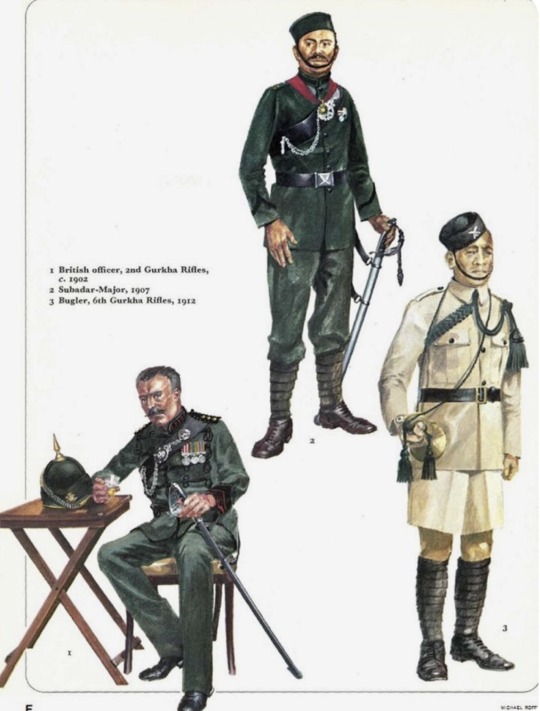
#illustration#art#artwork#imperial guard#astra militarum#warhammer 40000#warhammer 40k#warhammercommunity#warhammer art#imperium#gurkha
25 notes
·
View notes
Text
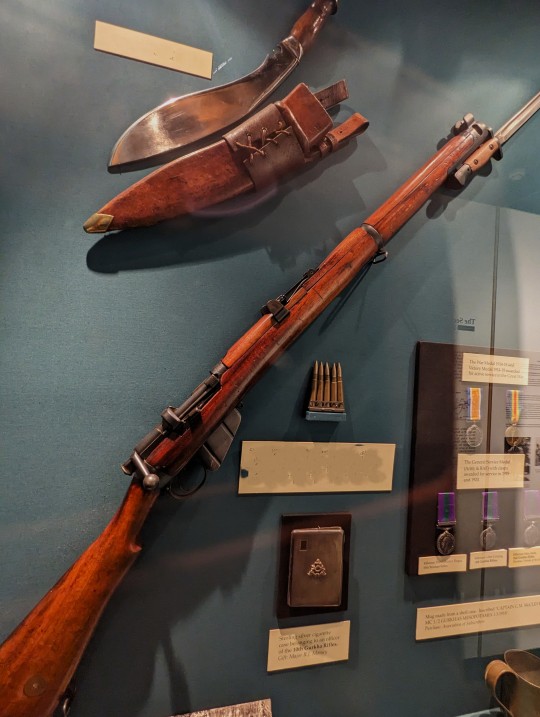

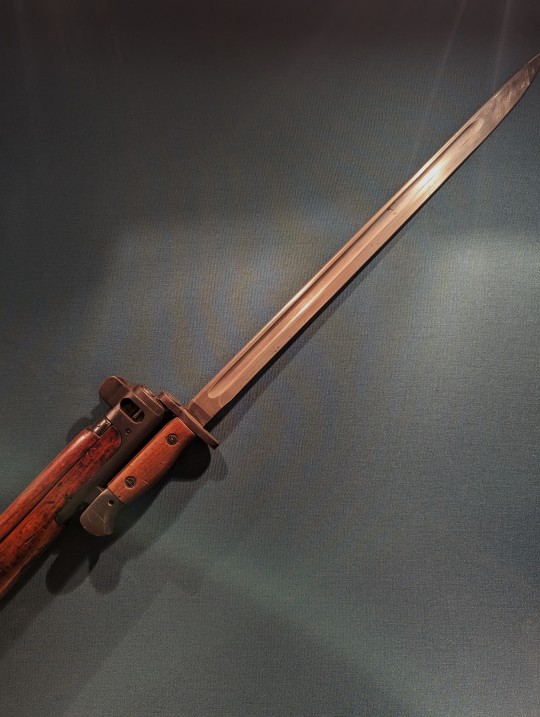
Short Magazine Lee Enfield Rifle Mark III and Sword Bayonet from the British Empire dated between 1914 - 1918 on display at the Gurkha Museum in Winchester, England
This rifle and bayonet was used by one of the Gurkha Regiments in the British Indian Army during the First World War. The Mark III was the standard rifle used by the soldiers of the British Empire during the First World War.
Photographs taken by myself 2023
74 notes
·
View notes
Text
Court Circular | 23rd June 2025
St James’s Palace
The Princess Royal, Royal Patron, the Security Institute, this afternoon attended the Security Institute Experience Day at Girlguiding Leicestershire, Topstones, Sludge Hall Hill, Billesdon, and was received by Colonel Richard Hurwood (Vice Lord-Lieutenant of Leicestershire).
Court Circular | 24th June 2025
St James’s Palace
The Princess Royal, Warden, this morning opened a new Coastguard Rescue Centre at Gordonstoun School, Duffus, Elgin, and was received by His Majesty’s Lord-Lieutenant of Moray (Air Commodore Alistair Monkman).
Her Royal Highness, President, Riding for the Disabled Association, having been received by Mrs Nancy Robson (Deputy Lieutenant of Moray), this afternoon visited Forres, Nairn and District Group, Muiryhall, Miltonduff, and presented The King’s Award for Voluntary Service.
Court Circular | 25th June 2025
St James’s Palace
The Princess Royal, having been received by His Majesty’s Lord-Lieutenant of Hampshire (Mr Nigel Atkinson) and the High Commissioner of Canada (His Excellency the Hon Ralph Goodale), this morning attended the Liphook Canada Day Service at St Mary’s Church, Church Road, Bramshott, and attended the Canada Day Performance at Liphook Church of England Junior School, Avenue Close, Liphook.
Her Royal Highness, Colonel-in-Chief, The Royal Logistic Corps, this afternoon inspected The Queen’s Own Gurkha Logistic Regiment on public duties at St James’s Palace.
The Princess Royal, Patron, Opportunity International United Kingdom, this evening held a Reception at St James’s Palace.
Court Circular | 26th June 2025
Buckingham Palace
The Princess Royal, on behalf of The King, held an Investiture at Buckingham Palace this morning.
Her Royal Highness, on behalf of His Majesty, held an Investiture at Buckingham Palace this afternoon.
St James’s Palace
The Princess Royal, Colonel-in-Chief, Royal Corps of Signals, this evening held a One Hundred and Fifth Anniversary Reception at St James’s Palace.
#soz for not posting these recently#i’ve been on my holibobs#princess anne#princess royal#court circular
8 notes
·
View notes
Note
Just gonna park your notes here too;

Now, let's see...
So about ranks, I am fully stealing the British Army ranking because I cannot figure this out on my own.
Hey, I stole theirs too!* That at least makes all this a little easier for me, US ranks (current and historical) got really quite complex to be honest. A side note I'll leave here is that the Brits tended to use 'Regiment-specific' ranks for quite a few units, as shown here;

It wouldn't be unusual for someone in Alyss's position, or unit, to get some form of odd title, if that's something you'd be interested in and wouldn't mind having to keep track of.
Moving onto 'special skills', your definitely in a better position to judge the utility of your fire magic than I am, but from we've talked about by now the specialist shock troop idea does make sense. I wanted to note, however, that the term 'fire team' and its associated unit has absolutely zero connection to the actual use of fire as a weapon, a la flamethrowers.
The story of fire teams are is, well, long. Very long, and also really hard to find sources for that I'm too confident in. So, I'm not going to talk too much about that, aside from briefly explaining how they operate. Basically, fire teams are a modern-ish invention that came about as a result of the invention of portable automatic weapons, which meant that fewer troops would be needed to give a unit a similar level of 'firepower'. This enabled these 'shrunken' units to theoretically act with greater independence from each other and their superior formations. Such increased lethality isn't the only precondition, however; a professional, trusted, and competent cohort of low-level junior leaders is key to making sure such units can work effectively towards a common objective instead of merely being defeated in detail, as such 'splintering' of a force, as opposed to concentrating it, risks.
Which, in a roundabout way, leads me to the next point here. Setting aside the almost inevitably aristocratic higher officer ranks, I think the part I'm looking at more is 'downstream', at the lower leadership ranks. Now, depending on a range of factors including whether you'd like to include Purchasing of Commissions as a prerequisite to officership, how aristocratic junior officer ranks might be can still vary without making the upper brass any less blue blooded, though noble-heavy junior officers are still likely. This being the WW1 era, by the way, the example of Guards units with royal affiliations being particularly heavy concentrations of esteemed noble sons might be something worth looking at, if you're curious.
How this connects to the 'fire team' bit could be expressed in terms of how 'centralised / decentralised' authority in the Ritanian Army is. In a simple sense, kilometres long Napoleonic era line formations were generally centralised under their general's authority, while the small trench raiding parties of WW1 were decentralised, given the freedom to move, fight, and bypass where their immediate leaders saw fit as long as they kept their superior's instructions in mind. Decentralisation allows for flexibility, and for decisions to be made quickly and in accurate response to the situation on the ground, but relies on junior personnel being empowered and trained to take on this responsibility, and senior leaders trusting them enough to not micromanage. What, exactly, the 'average' Ritanian NCO, or those specialists like Alyss, would actually be able to do on their own, then, depends on this sort of cultural environment built up within their respective corners of the Army.
And there, then, we can segway to your question;
So what are the actual duties of a sergeant? What would they do in the field, in battle, during rest periods, ect?
This is, well... a long story. Two stories, technically; the 'battlefield' duties of a Sergeant / their near equivalents, and their 'out of battle' job.
Oh, and when I say near equivalents, I meant this;

There's some subtle differences between how the US and UK do it (looking at you American-style Warrant Officer), and I'd imagine the army buddies you mentioned would be referring to the former. This could lead to a tangent about the difference between a Junior and Senior NCO, but I'm gonna save myself the effort and use this excerpt from this Military dot com article on enlisted ranks in the current US Army, which I can recommend.

The quick answer here as I understand it is between NCOs who lead junior enlisted, and NCOs who 'advise' officers / headquarters, with the caveat that 'advising' a green-as-grass lieutenant is a bit different that doing the same for a hopefully seasoned major.
I'll start by briefly explaining the historical duties given to sergeants in around the 19th Century and going into WW1, then give an overview of their current duties where they differ. You can pick and choose where you see fit.
Starting with that earlier time period, the combat duty's of NCOs were a lot more limited than in more modern militaries. Barring certain specific contexts which placed a premium on small-unit actions, sergeants and their immediate junior officers would primarily be expected to make damn sure that their senior commanders' orders were carried out by their own units, the 'platoons' within a larger 'regiment' for example. This being the era of muzzle-loaders, this often involved minding the drill (loading, firing, kneeling, etc.) and dressing (position in the line) of their soldiers, keeping them separate and preventing any sudden breaks in morale under intense pressure. This is hard work, especially under fire, but is arguably simpler than more modern NCOs and junior officers, since a platoon of a few dozen won't matter much individually in the face of, say, the amassed ten thousand charging Imperial Guard at Waterloo.
It is, however, outside of battle and 'in camp' that the existence of long serving NCOs makes itself invaluable. And note the emphasis on 'long serving' here, and 'professional' above; NCOs, being the senior most enlisted there are with at least a decade of service under the belt, serve as repositories of institutional knowledge built up over years of a military's experience, and the primary means by which that knowledge and culture are inculcated within new recruits once they join their units.
Many things changed between the era of gunpowder and guided bombs, but this principle has largely remained. From basic weapon handling and safety discipline to how to properly pack a sack, sergeant simply know stuff, and its much easier to have them on hand to train the next generation face-to-face, constantly, than to be forced to constantly relearn and relearn the same lessons. Compare this to the (arguably simplified) 'Soviet bloc' system of conscript armies with conscripted NCOs, who served only as long as their peers did. Their sergeants couldn't hope to live up as 'role models' for their ostensibly junior peers because it's not like they necessarily knew much better, or had the accumulated confidence and credibility to carry out this task.
In addition to the 'functional' knowledge that NCOs carry on, they also play a key role in maintaining an Army's professional culture and values. This isn't always a good thing, mind you, but the whole concept of 'esprit de corp' relies on a close knit, shared identity across the 'community' that any military unit fundamentally is. NCOs, being both 'fellow soldiers' and respected figures of authority, are the 'face' of that identity most apparent to their junior soldiers, and how they carry themselves can do a lot to shape their morale and attitudes towards the institution. To cap this portion off, the most senior NCOs, those who've moved past 'soldier leadership' to positions in proximity to officers, will have the additional duty of making damn sure their commanders are made well aware of enlisted concerns and needs in their own planning, essentially acting as the 'voice' of these soldiers amongst the officer corps.
Finally, I'll turn to the more specific tasks of modern NCOs. In addition to the 'camp' tasks outlined above, the modern Sergeant has been given a degree of responsibility well beyond anything their historical counterpart would have had. This ties in with what I mentioned earlier about the trend towards 'decentralised' warfare, where ever smaller units get access to ever larger 'capabilities', although much more constant factors such as complex terrain and 'unconventional' forms of warfare have also had a part to play.
These days, most modern armies consider the lieutenant-led platoon to be the smallest unit truly capable of independent action. This would almost never have been considered possible back in the day, but the structure of modern platoons is designed to incorporate a fairly wide variety of weapon systems into its organisation. Since a lot more focus gets placed on the level of unit immediately above an NCO's jurisdiction, instead of several tiers higher, their individual skill and leadership counts for a lot more, both acting in concert with the whole platoon and when broken off to act independently from their officer lieutenant, a possibility historical armies would barely countenance.
One last note on this. Going back again to the senior NCOs, who as above aren't going to be leading troops in battle, within a unit's headquarters I've broadly gotten the sense that a lot of their duties revolve around keeping things running smoothly in the rear, such as by overseeing casualty management and the resupply of fighting units at the front. Also, since they're already at the HQ, assuming basically every other officer present is dead it might fall to them to take charge and get a hold on things. By that point, though, the unit in question is probably a little beyond salvaging.
The last thing I have to say here is a small correction to what you've mentioned in your notes, which I'm a little curious about since you said they were brought up by someone from the Army.
You see, a 'squad'...

is a very small unit, and for what it's worth the Brits call it a 'section' usually. Officers don't lead squads, with even the junior most officer, a Second Lieutenant in the UK, commanding a platoon; instead, squads are commanded by junior NCOs, in this case a US Army Staff Sergeant.
Captains are, more or less, the senior-most of the 'kinda junior' officers, below the so called 'Field Grades' which start at Major (like Goyan!).

They command Companies, which are usually two legs up from a Squad in any usage I'm aware of. You would be correct in saying that there is an NCO present to advise them, though, and that article I mentioned earlier phrases their relationship this way;

Which about corroborates your description. For a little context, the age and seniority difference between a Captain and their 'company sergeant' is probably less substantial than that between a Lieutenant and their 'platoon sergeant', and as far as 'book smart' goes that's mostly in terms of the requirement for a college degree to commission in the US and the fact they'll have attended numerous officer schools by the time they take command. NCOs also have their own schools, of course, but you're right that a lot of what they have to offer is 'accumulated experience on the job'.
And with that... I need lunch.
Alright I have been working on this off and on for months. I need help. I want to decide what rank Alyss had in the Ritanian Army because I have a scene in mind but it depends on her rank how it goes. So, Alyss is from the working class, but has considerably more education than the average person. She enters the army with some weapons training, primarily shooting and polearms from the Church, she can read, write, and do math easily, and she has fire magic which is basically like martial arts training. I am going to assume that she enlists as just a private, but probably gets promoted at least once in the two years of fighting she is involved with. Would it be reasonable for her to be promoted early on to Lance Corporal for her clerking abilities, and possibly up to Corporal? I have no sense for how these things work. You are the expert I know.
HAHAHAHahahahaha yesss!!!
You, have come to the right blog!
Now, I foreshadowed a pretty hefty worldbuilding process to you earlier, but just in case things get in the way of that rabbit hole I wanted to come up with a short-ish, succinct-ish answer to your immediate question. That question being, as far as I can tell;
What 'rank' within the Ritanian Army would Alyss, a skilled commoner, attain by the end of a military career featuring at least 2 years of wartime combat service?
The answer that you seem to have now is 'Lance Corporal, maybe Corporal', and my reply would be that said ranks, or more accurately their equivalents in the Ritanian Army as you'd have it, are absolutely possible, given the details I outlined above.
Truth be told, there's a lot potentially going in favour of pushing her towards 'seniority' in general.
Don't You Know There's A War On?
If there's one thing that's sure to bring about rapid and unexpected career progression in the military, it's war!
Honestly, this accounts for about 90% of why I'm so firm in approving the ranks you've put forwards; if Alyss is even remotely competent, and lucky, there's a non-zero chance she attains both those ranks within the first year. (Lance) Corporal isn't exactly the big leagues, and if the pre-War soldiers holding those ranks in Alyss's unit get bumped off and she shows any talent at all, you could absolutely see her get field promoted to fill the slots mid-battle, albeit within a much-reduced unit. After that, it's a matter of not joining your predecessors.
On this topic, by the way, I recalled a lovely piece of historical trivia that had much to do with young bucks hungry for promotion, this time in the Royal Navy;

(She Has A) Special (Set Of) Skills
A subject I'd absolutely love to delve into the is the broad increase in the ratio of specialists and special skills VS 'the general infantry' in most militaries as they progress technologically. How exactly specialists function in Ritania depends on a lot of things, its state of technology (and magic!) among them, but a general rule is that the fewer people exist in the relevant 'pool' of potential people who could be promoted, the more likely specific (competent) person in it is to get promoted.
If, for example, the Army decides it needs to rapidly expand its corps of 'whatever Alyss's speciality is' (flame-troops, or something, right?) then all the people already in it might get bumped up and given the authority to whip new recruits into shape. On the other hand, if this is the sorta job that gets an above average number of people killed, then the rate of career progression for those still alive is correspondingly faster.
Miscellaneous
Outside of these two factors, there's a whole grab basket of stuff that might potentially work in Alyss's favour. One of them, again, is how relatively low the ranks you specified are; they're called 'junior Non-Commissioned Officers' for a reason, after all. To be quite honest, in two years and with my pretty optimistic guess at her competence I'm surprised she didn't make Sergeant (or equivalent). For comparison, here's something I found on the - peacetime! - US Army for promotion to Corporal, which for them is the 4th enlisted rank from the bottom.

A bit over two years in a 'modern' style of Army, and given what I mentioned above I think cutting down the timeline would be perfectly believable.
There's also some of her pre-Enlistment traits that you brought up. I'm a little suspect on whether most of them would impact her rate of advancement much, since they appear more likely to influence her actual vocation upon joining rather than what happens once she has. After that, a lot of them are likely to never be used or trained on, though that depends on just how specialised the Ritanian Army actually is, which is... something I'd love to talk about.
Literacy, then, might help, but that depends on both how prevalent literacy is across society, and whether or not the duties expected of an 'enlisted leader' would need that skill. Off the top of my head, I recall that one reason for aristocratic officer corps was that literacy was concentrated to that class only; if so few other 'rank' soldiers could be expected to be literate, an Army might just not bother to create pathways to allow them to get into a position where literacy was needed. Of course, if the case is not that extreme, but still one where literacy is limited, then it'd be the sort of trait that a professional Non-Commissioned Officer would need, and thus one looked for in troops. All of that, then, is one way in which the character and substance of a military is heavily dependent on the society that it exists within, a subject beyond the purview of this ask!
Though I will say, I can't imagine 'clerking' working out well for fast promotion, unless you meant 'administrative and organisational talent' more than 'actually being a full time adjudant or staff officer'. That whole track of the profession of arms is a crucial and fascinating one, but you don't often here tales of glory or heroic career arcs coming from those quarters; 'desk jobs' don't get half as much love as they deserve.
The Unknown... For Now!
With my answer in the 'Affirmative!' already given and explained, right now I'd just love to get into the weeds of all this even deeper and worldbuild the everloving crap out of the Ritanian Army and its career advancement process. Here's two questions I came up with that might help with articulating the actual promotion system Alyss would be going through;
Who gets to decide, and 'write down', a promotion? Are they exclusively processed by the Army's central personnel department, handed out by senior or direct commanders of a certain rank and office, or something with inputs from both? At higher ranks, it's not unusual for civilian leadership to oversee this process, but the average enlisted doesn't need to care about that.
What does it take to 'get' promoted? More specifically, is it a subjective process dependent on specific individuals decisions and perspectives, or a rigorous, standardised process with inflexible rules? Keeping in mind, of course, that it is ultimately people who execute such rules.
To end off this answer, which might I add was an absolute joy to write, I'd like to ask for two clarifications;
First of all, do you have a rank structure in mind already? Your use of Lance Corporal and Corporal suggested something pretty in line with how it's been IRL since Napoleon, but couldn't hurt to ask. I'm a bit of a sucker for unusual rank structures - screwing around with the Officer-Enlisted distinction always seemed cool, but as I mentioned above that'd be a whole discussion for another time.
Secondly, and on that topic... would Alyss have made a good officer, or in fact, been able to become one? Taking it very loosely, that is. Is Ritanian officership class-restricted? Literacy, like I mentioned, is the sort of quality that is exceptionally beneficial for long-service leaders. Of course, there might be a whole host of reasons personal and external which make this particular question moot - in which case, I'd love to hear them!
And with that... I'm done!
#god this took most of my morning to write but I promised myself I wouldn't waste time getting to this#hope it wasn't too confusing; a lot of stuff here is hijacked from US focused sources so when it comes to the specific ranks in Ritania#ask me back and I'll try and help untangle the rough conversions#Also! I skipped the part about confirming and agreeing on promotions part because it didn't feel *too* important#and you're right that an active war makes it complicated#but#it's still something I'm interested in so I'll say a few words on it here#basically the difference between a centralised and decentralised system reflects the degree of centralisation of the Army as a whole#many societies would much rather not give soldiers and lower level commanders any form of incentive for loyalty to individual generals#than to the centralised state (for 'why' see feudalism and warlords)#at the same time allowing individual commander's discretion can go a good way to enhancing a unit's esprit de corps#which is exactly what the previous point was about avoiding in a roundabout way#this centralisation issue also extends into the recruiting system#on the one hand a modern US Army soldier from any state is about likely to get posted to any other state as their own#and to meet comrades from across the country in their unit#on the other hand is the British regimental system with highly localised recruitment aimed at connecting whole regional communities#to military service (see Pals Battalions for this and why it's not always great)#the latter method might also give you the sorts of ethnically distinct units you occasionally see in history esp. ancient warfare#or things like the Gurkhas or the hoohah surrounding Scottish Highlander regiments#okay that's it bye!!!
5 notes
·
View notes
Text
MESSAGE FOR: Ward, A., ILKHAN / FIRST LORD
FROM: M. Hazen, COMGEN
My IlKhan, as requested, here is a breakdown of the forces being sent to Helios as part of the third wave of Operation TOUCHDOWN.
------------------------------------
* National:
-- SLDF Royal:
1st Royal BattleMech Regiment "Turkina"
2nd Royal BattleMech Regiment "Werewolves"
3rd Royal BattleMech Regiment "Gunslingers" (ex-Stone's Lament/KotRS)
331st Royal BattleMech Regiment "The North American Regiment"
410th Royal BattleMech Regiment "The United Member States Regiment"
1st Royal Swiss Cavalry Regiment
13th Royal French Demi-Regiment
59th Royal Jump Infantry Regiment "The King's Own Jump Troops"
82nd Royal Jump Infantry Regiment "The All Americans"
101st Royal Jump Infantry Regiment "Screaming Eagles"
175th Royal Mechanized Infantry Regiment "The Desert Rats"
181st Royal Mechanized Infantry Regiment "The King's Own Scots Rifles"
206th Royal Mechanized Infantry Regiment "The Democrats of Brazil"
8th Royal CAAN Regiment "The Black Sea Regiment"
20th Royal CAAN Regiment "The Saipan Regiment"
124th Royal Heavy Assault Regiment "Dai Maxbuster"
1st Royal Separate Special Purpose Regiment "The Fidelis"
Elements of Clan Iron Orca - Command Star
-- SLDF Regular:
46th BattleMech Regiment "The Chrome Hounds Regiment"
171st BattleMech Regiment "The Zhukov Regiment"
332nd BattleMech Regiment "The Antarctica Regiment"
335th BattleMech Regiment "The Joan of Arc Regiment"
398th BattleMech Regiment "The European Regiment"
9th Mechanized Infantry Regiment "The Pride of Puget Sound"
59th Mechanized Infantry Regiment "New Kyoto Samurai"
80th Mechanized Infantry Regiment "The Texas Rangers"
138th Mechanized Infantry Regiment "The Chicago Regiment"
233rd Mechanized Infantry Regiment "The King of Denmark Regiment"
245th Mechanized Infantry Regiment "The Latvian Rifles"
256th Mechanized Infantry Regiment "The Dutch and Belgian Fusiliers"
1st French Regiment
1st German Regiment
1st Ukrainian Regiment
1st Infantry Regiment "The Big Red One"
4th Infantry Regiment "The Gurkha Rifles"
10th Infantry Regiment "The Welsh Foot Regiment"
61st Infantry Regiment "The Michigan Sixty-First"
77th Special Operations Group "Blackhearts"
-- Non-Star League:
>> FWL:
1st Nova Cat Provisionals
Kara's Scorchers
>> Capellan Confederation:
Death Commandos
2nd McCarron's Armored Cavalry
1st St. Ives Lancers
Marshals of Tikonov
>> Federated Suns:
1st Avalon Hussars
Davion Assault Guards RCT
3rd Davion Guards
McKinnon's Company
>> Lyran Commonwealth:
2nd Donegal Guards (AWOL)
1st Merdengard Grenadiers (AWOL)
6th Royal Guards RCT (AWOL)
Omega Provisional Cluster (Clan Wolf-in-Exile; operating under Lyran command)
>> Draconis Combine:
Hikage
Ryuken-San
Amaterasu
Otomo (elements of)
Izanagi Warriors (elements of)
1st Genyosha
2nd Arkab Legion
1st Sword of Light
2nd Sword of Light
5th Sword of Light
7th Sword of Light
8th Sword of Light
1st Ghost Regiment
>> Rasalhague Dominion:
Rasalhague Galaxy
1st Drakøns
>> Magistracy of Canopus:
1st Canopian Night Stalkers
2nd Canopian Fusiliers
>> Aurigan Coalition:
1st Aurigan Guards
>> Taurian Concordat:
Taurian Guards Regiment
>> United Hindu Collective:
Messengers of Shiva
>> Raven Alliance:
First Raven Phalanx
Alliance Grenadiers
>> Scorpion Empire:
Seeker Keshik
* Mercenaries:
Neon Knights (chronologically displaced)
Skyborn Marauders (chronologically displaced)
Lone Wolves (inc. Fox Patrol)
Lindon's Company
Steve's Stevedores
Tiamat's Terrors
Raging Horde
------------------------------------
As we discussed, this does represent a significant deployment of SLDF personnel, but the experience these units will gain will far outweigh any risks. Standing up units with the names and recruitment profiles of old SLDF regiments is a powerful tool to establish continuity with the old Star League, and provide the people of Terra incentives to join up. I am hoping similar programs can be carried out as the Star League expands.
Deployment of these forces will begin on D+6, following destruction of remaining Blakist assets in the Coen Regional Area of Operations (CRAO), currently scheduled for tomorrow, D+5. Most of the forces listed here will deploy to pre-selected AOs across Helios, with several SLDF Regular units detailed to continue occupation operations in the CRAO following the first and second wave units departure to a new AO.
Mercenary and non-Star League forces will be assigned as deemed fit. Currently I plan on attaching the following units to my own operational sector command - in addition to those already attached in prior waves:
2nd Royal BattleMech Regiment
59th Royal Jump Infantry Regiment
124th Royal Heavy Assault Regiment
1st Royal Separate Special Purpose Regiment
46th BattleMech Regiment
1st Ukrainian Regiment
1st Infantry Regiment
Taurian Guards Regiment
1st Canopian Night Stalkers
2nd Canopian Fusiliers
Hikage
Ryuken-San
Amaterasu
Otomo/Izanagi Warriors elements
1st Merdengard Grenadiers
6th Royal Guards
Omega Provisional Cluster
3rd Davion Guards
Neon Knights
Skyborn Marauders
Yours,
M. Hazen
Commanding General, SLDF
MESSAGE ENDS
STOP STOP STOP
14 notes
·
View notes
Text
The Royal Edinburgh Military Tattoo Celebrated Triumphant 2024 Show
The Royal Edinburgh Military Tattoo is officially over and it's been truly awesome. The entire show was superb! The Royal Navy ⚓ took you on a journey through time, celebrating the tides of change.
The final part of the night when they play 'The Black Bear' and 'Scotland the Brave', and The full line-up for 2024 included The Massed Bands of His Majesty's Royal Marines, Pipes and Drums of 1st Battalion Scots Guards, 1st Battalion Irish Guards Drums and Pipes, Pipes and Drums of the Royal Gurkha Rifles, Combined Pipes and Drums of The Royal Tank Regiment and Scottish and North Irish Yeomanry, The Royal Edinburgh Military Tattoo Pipes and Drums.
The Royal Edinburgh Military Tattoo now turns attention to next year and its 75th Anniversary. The milestone Show, Heroes Who Made Us, will run from 1 – 23 August 2025.

#TheRoyalEdinburghMilitaryTattoo #edinburgh #TheRoyalNavy #scotland🏴 #bagpipers
Posted 26th August 2024
10 notes
·
View notes
Text
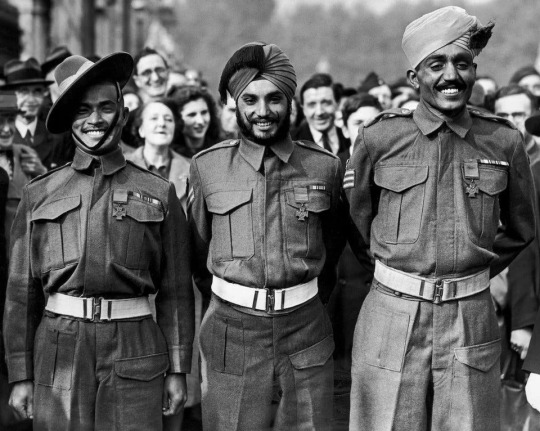
Three recipients of the Victoria Cross, October 1945, Left to right: Naik Bhabbhagta Gurung of the 2nd Gurkha Rifles, Naik Gian Singh of the 15th Punjab Regiment and Havildar Umrao Singh of the Indian Artillery
60 notes
·
View notes
Text
Surprising number of people on here evidently don't know about Gurkha regiments.
26 notes
·
View notes
Text
*Can you hear a pin drop?* *What is the meaning of pin drop silence?* *Following are some instances when silence could speak louder than voice.* *Take 1:* *Field Marshal Sam Bahadur Maneckshaw once started addressing a public meeting at Ahmedabad in English.* *The crowd started chanting,"Speak in Gujarati.* *We will hear you only if you speak in Gujarati."* *Field Marshal Sam Bahadur Maneckshaw stopped.* *Swept the audience with a hard stare and replied,* *"Friends, I have fought many a battle in my long career.* *I have learned Punjabi from men of the Sikh Regiment;* *Marathi from the Maratha Regiment;* *Tamil from the men of the Madras Sappers;* *Bengali from the men of the Bengal Sappers,* *Hindi from the Bihar Regiment;and* *Even Nepali from the Gurkha Regiment.* *Unfortunately there was no soldier from Gujarat from whom I could have learned Gujarati."...* *You could have heard a pin drop* *Take 2:* *Robert Whiting,* *an elderly US gentleman of 83, arrived in Paris by plane.* *At French Customs, he took a few minutes to locate his passport in his carry on.* *"You have been to France before, Monsieur ?", the Customs officer asked sarcastically.* *Mr. Whiting admitted that he had been to France previously.* *"Then you should know enough to have your passport ready."* *The American said,* *"The last time I was here,* *I didn't have to show it."* *"Impossible.* *Americans always have to show their passports on arrival in France !", the Customs officer sneered.* *The American senior gave the Frenchman a long, hard look.* *Then he quietly explained* *"Well, when I came ashore at Omaha Beach,* *at 4:40am, on D-Day in 1944, to help liberate your country, I couldn't find a single Frenchman to show a passport to.... "* *You could have heard a pin drop* *Take 3:* *Soon after getting freedom from British rule in 1947, the de-facto prime minister of India, Jawahar Lal Nehru called a meeting of senior Army Officers to select the first General of the Indian army.* *Nehru proposed, "I think we should appoint a British officer as a General of The Indian Army, as we don't have enough experience to lead the same."* *Having learned under the British, only to serve and rarely to lead, all the civilians and men in uniform present nodded their heads in agreement.* *However one senior officer,Nathu Singh Rathore, asked for permission to speak.* *Nehru was a bit taken aback by the independent streak of the officer, though, he asked him to speak freely.* *Rathore said, "You see, sir, we don't have enough experience to lead a nation too, so shouldn't we appoint a British person as the first Prime Minister of India?"* *You could hear a pin drop.* *After a pregnant pause,* *Nehru asked Rathore,* *"Are you ready to be the first General of The Indian Army?"..* *Rathore declined the offer saying "Sir, we have a very talented army officer, my senior, Gen. Cariappa, who is the most deserving among us."* *This is how the brilliant Gen. Cariappa became the first General and Rathore the first ever Lt. General of the Indian Army.* *(Many thanks to Lt. Gen Niranjan Malik PVSM (Retd) for this article)* 👌👌👌🙏🙏 *Worth reading ..* *This article thrills to read even after reading n times!*
5 notes
·
View notes
Text
After a very rigorous inspection at Wellington Barracks, from Friday 19th April 2024 the Gurkha regiment will take over guard duties at The Tower of London, St James's Palace and Windsor Castle. They will also be at Buckingham Palace after Sunday's London Marathon.
This is the first time in their 75 year history that the Queen's Gurkha Signals have taken on the public ceremonial duty of guarding the Royal Palaces.
9 notes
·
View notes
Text

More progress on my Imperial Guard Gurkhas, the Himajaran Rifles Regiment
#illustration#art#artwork#digital art#40k#imperial guard#warhammer 40k#warhammer 40000#gurkha#characterdesign#wip#my wip#current wip#art wip#wh 40k#astra militarum
18 notes
·
View notes
Text

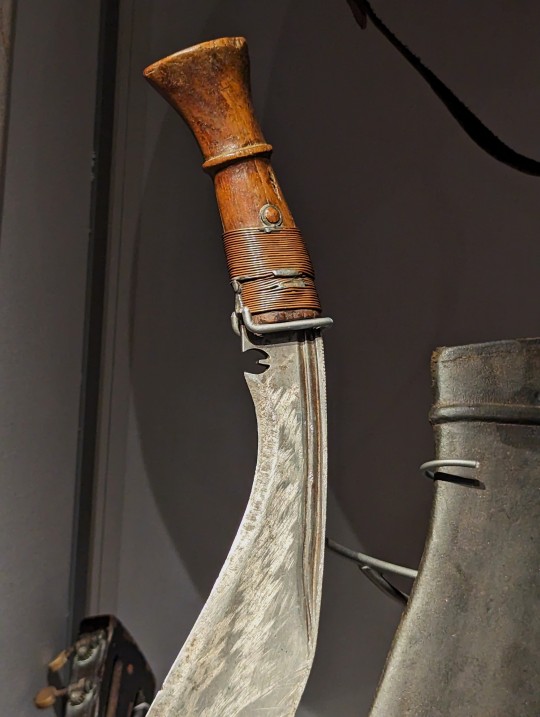
Chindit Kukri from the British Empire dated to the 1940's on display at the Cumbria Museum of Military Life in Carlisle, England
This kukri was carried by Lieutenant-Colonel Johnny Burgess who commanded the 34 Chindit Column 4th Battalion during the Burma Campaign. This was traditionally a Gurkha weapon but many British troops used them for jungle warfare during both the First and Second World Wars.
The Chindits often used them as many of them were from the Gurkha regiments. They were special operations units for the British and Indian armies during the Second World War that raided behind the Japanese Imperial lines. There is still some controversy behind how effective they were as long marches through malaria infested swamps, dangerous jungles and some early failures led to a high casualty rate.
Photographs taken by myself 2023
#military history#second world war#british empire#20th century#england#english#cumbria museum of military life#carlisle#barbucomedie
19 notes
·
View notes